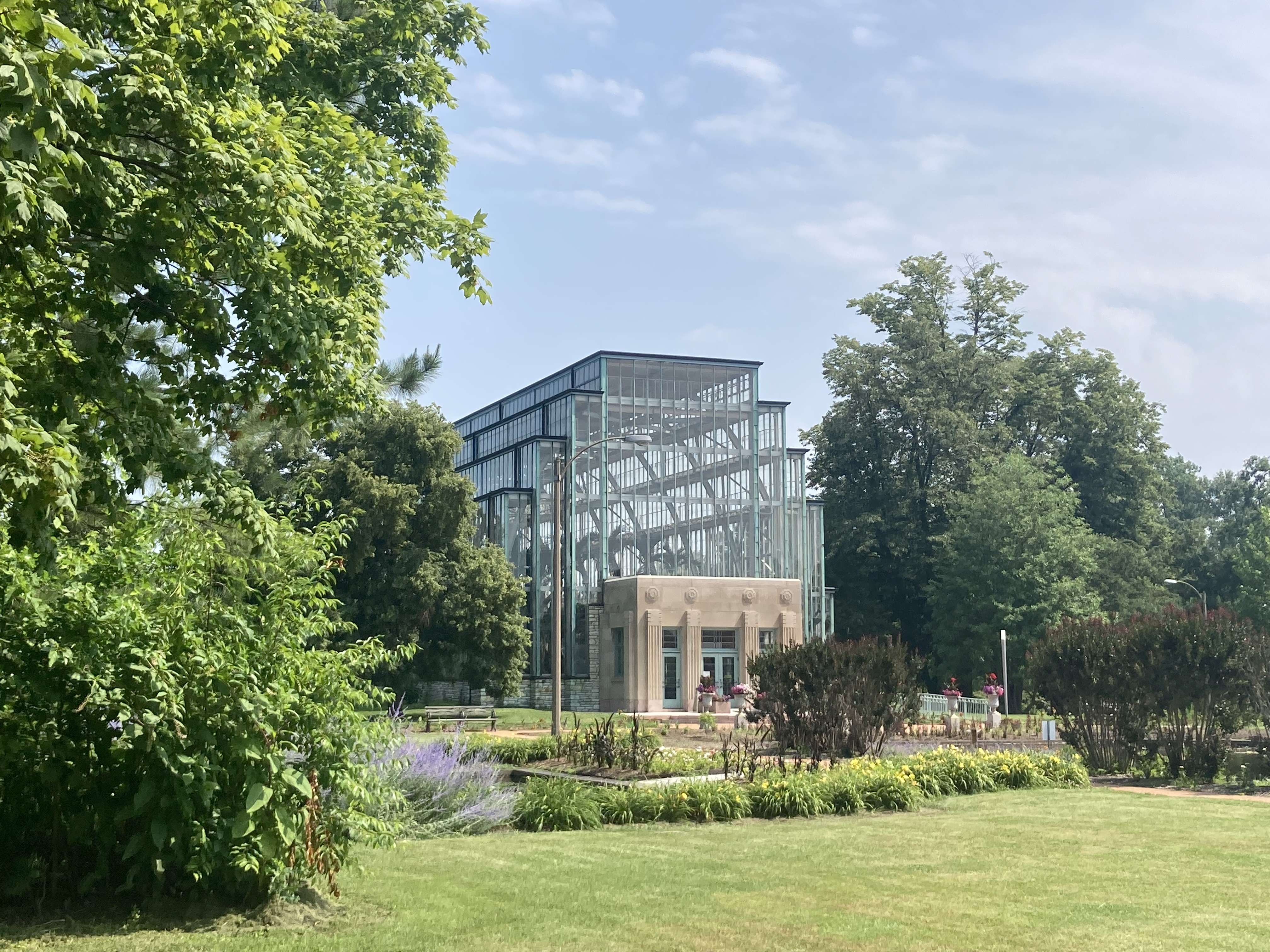Parks Preserve Nature
Contact
University of Arkansas System Division of Agriculture
Cooperative Extension Service
2301 S. University Ave.
Little Rock, AR 72204

Parks Preserve Nature
I’m sitting in the shade here in Forest Park, the grand city park of St. Louis that shows how important it is to include and support such green spaces in our urban landscapes. Few would argue that nature must be a part of all our lives, but in dense cityscapes finding these little conduits of connectivity to the natural world can be challenging. Forest Park is one of these great urban spaces that shows how dedication and thoughtful management can help provide a space for everyone.

The park is big — more than two square miles — and has a long history: it was established in 1874 on what was, at the time, the western edge of this middle-American city. From its beginning, it was conceived as a place for everyone with no admission fees. The park reached international acclaim when it was selected to be the site for the Louisiana Purchase Exposition which was to celebrate the centennial of the Louisiana Purchase. Though the purchase agreement was signed in 1803, the exposition, popularly called the 1904 St. Louis World Fair, didn’t kick off until the spring of that year.
World Fairs are a spectacle that I’ve never had the opportunity to visit. I guess they have gone the way of the dinosaurs — too large and lumbering to support in this modern age. But 120 years ago they were a big deal. Almost 20 million people visited the displays where all manner of modern inventions were showcased. The master plan for the Exposition was designed by German-born city planner George Kessler.
I was surprised to learn that even at that early date, 140 automobile manufacturers displayed their offerings in the Hall of Transportation. These early motor cars were powered either by steam, batteries or gasoline. We know how that turned out. In the Greco-Roman Palace of Electricity, Alexander Graham Bell exhibited a new concept he called the “radio phone” — a wireless telephone — that first evolved into the radio and eventually the wireless gadget we carry in our pockets. Among many other innovations, the first public display of X-rays for use in medicine was exhibited. While not specifically invented for the fair, products such as Dr. Pepper and Puffed Wheat first reached a national audience at this mass event.
But the fair closes, and the circus leaves town. Many, but fortunately not all, of the structures built for the fair were designed as temporary displays. The St. Louis Art Museum is housed in the fair’s Palace of Fine Arts building. Unfortunately, the fancy finery of many of the structures were made of plaster of Paris and hemp which dissolved as the rains came. The Arkansas Exposition building — a large wooden two-story structure — was dismantled and shipped to Fayetteville where it was rebuilt on Mount Nord overlooking the University. That structure was finally torn down in the 1990s and replaced with a modern brick home.
But the citizens of St. Louis treasured their park and continued to support it. The zoo, art museum, natural history museum and a myriad of conventional uses are found throughout the park. In 1936 the Jewel Box — a 7,000-square-foot, 50-foot-tall Art Deco greenhouse was built as a horticultural display space. This impressive structure was a Works Progress Administration (WPA) project that was added to the National Registry of Historic Places in 2000.
In 1996, a donor stepped up with funding for one of my favorite features in the park — a little cutoff corner called Turtle Park. Interstate 64 construction had marooned a small piece of property so a park supporter came ups with the idea of building concrete turtles to represent the seven species of reptiles found in the area. And one giant snake. It is a place of fantasy and imagination that delights everyone who stumbles upon it.
Public spaces such as Forest Park must be loved to survive. They must be nourished by the community which provides tax dollars to maintain them and the vision of those wealthy individuals who see the worth of providing a link back to the natural world we all need in even these large, densely packed urban settings.